Download PDF
Download page Modeling Steep Reaches.
Modeling Steep Reaches
Frequently, we are developing an unsteady-flow river hydraulics model and the finite difference methodology goes unstable during the simulation. This can occur in extremely steep river reaches and when modeling dam breach events where the hydrograph is rapidly rising from a low base flow (usually in very steep terrain). The model may be going unstable for many other reasons; however, for the case where the reach is extremely steep (greater than 1% slope) and flows are low, the model is likely unable to solve the full shallow water flow equations because the water surface is going supercritical and flow depths are small. This is typically because, for the prescribed flow, the solution to the equations results in high velocities and shallow depths and the resulting derivatives for the change in water surface depth ends up being large compared with the depth from the previous time step.
There are many modeling capabilities in HEC-RAS than can be considered to improve model stability: increasing Manning's n values (see also Jarrett's equation), decreasing model time step, using the Advanced Time Step Control, adding Inline Structures for those extremely steep drops, turning on the Mixed Flow Regime, and/or incorporating Pilot Channels into the geometry. Each of the model capabilities should be considered; however, sometimes the model is just very steep and the finite difference solution scheme will just not stay stable. When you go to run your simulation, you end up with the dreaded "red" bar and, despite your best efforts, the model simulation continues to go unstable.
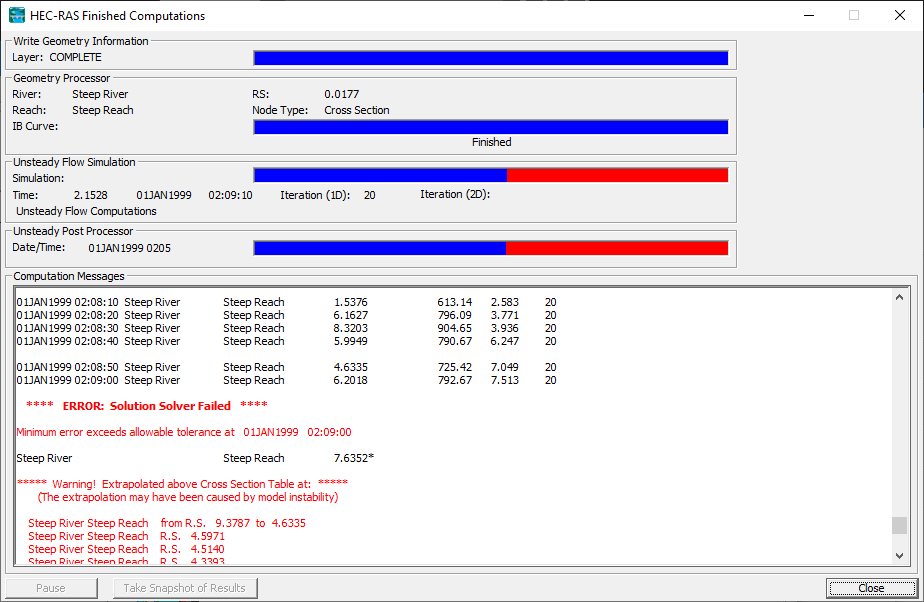
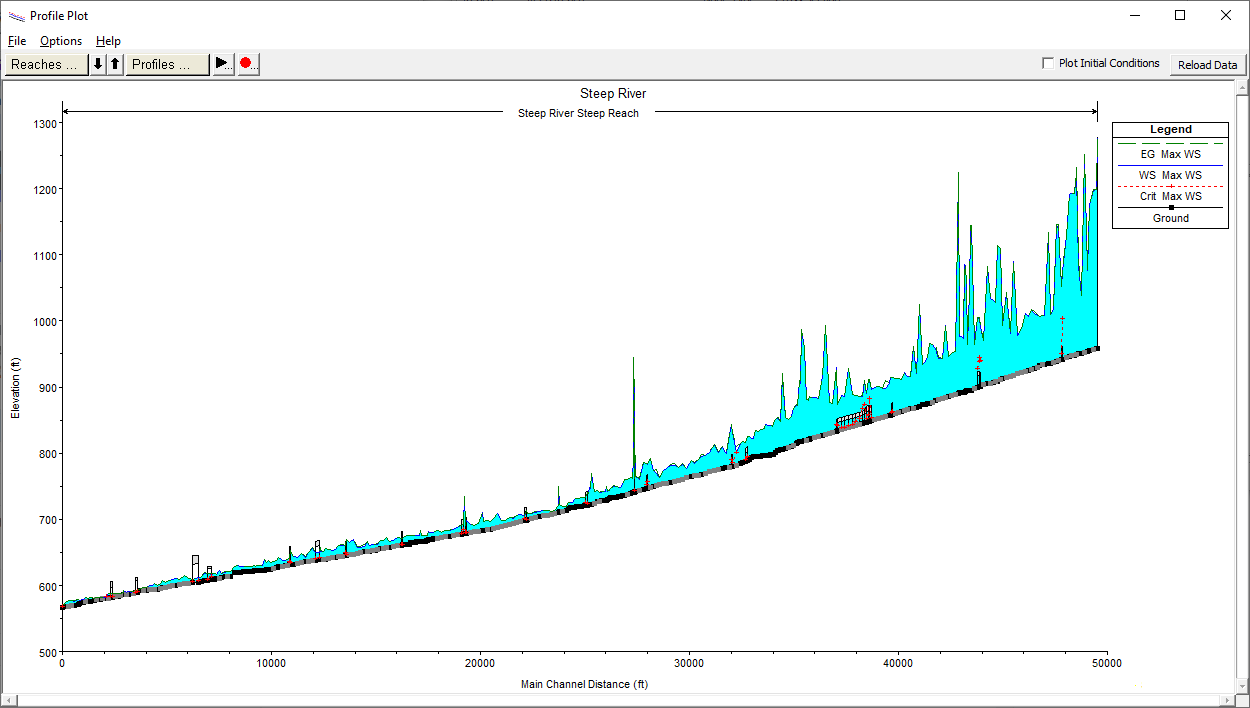
At some point, you should consider the Hydrologic Routing Method that is available in HEC-RAS from the Geometric Data Editor | Options | Hydrologic Unsteady Routing menu item. The Hydrologic Unsteady Routing option allow you to define portions of the model to be routed with a hydrologic routing technique instead of using the full unsteady-flow equations. The hydrologic routing method is based on the Modified Puls routing technique.
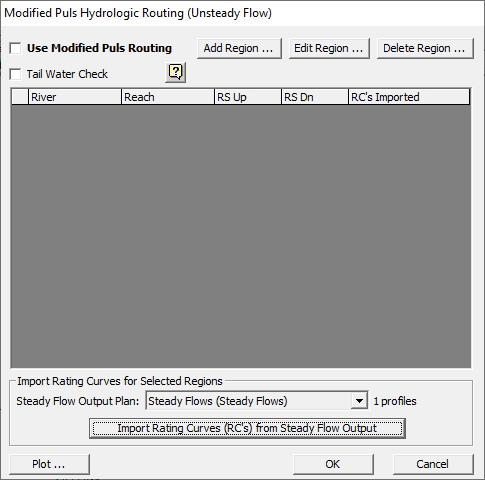
As you can see from the Modified Puls Hydrologic Routing window, you will need to specify a Region (routing reach) to utilize the routing and Import Rating Curves for that reach. This requires that you set up a steady flow plan that has multiple steady flow profiles representing the range of flows you will simulate (at least 20 is usually recommended).

Run the Steady Flow Analysis to develop the water surface profiles for the multiple runs.
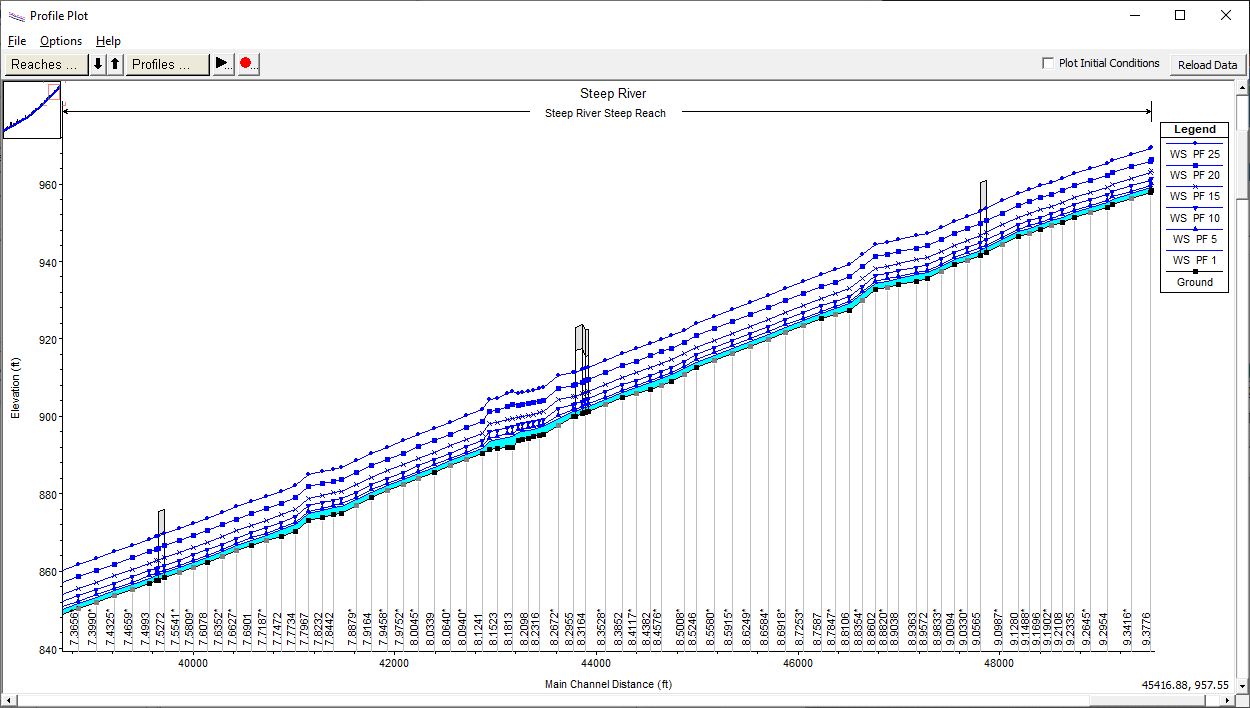
Next, set up the Hydrologic Unsteady Routing option. Click the Add Region button from the Modified Puls Hydrologic Routing window.
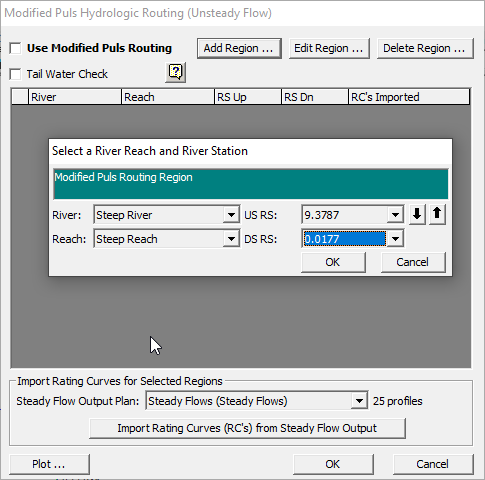
Then Import Rating Curves for the selected reach by clicking the Import Rating Curves (RC's) from Steady Flow Output button. You must have the same geometry as was used in the steady flow simulation. Once imported, the River Reach will show how many Rating Curves will be used - a rating curve for each cross section in the model. Make sure to turn on the hydrologic routing method by checking the Use Modified Puls Routing.
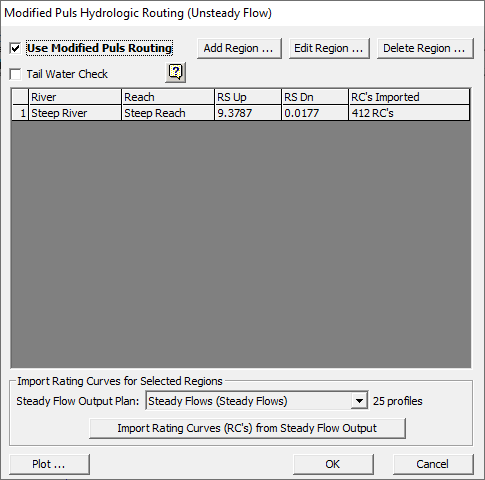
Run the unsteady-flow simulation. The areas where you used Modified Puls routing will solve, producing a stable solution.

The Profile Plot will should show a reasonable result with no steep spike due to model instability.
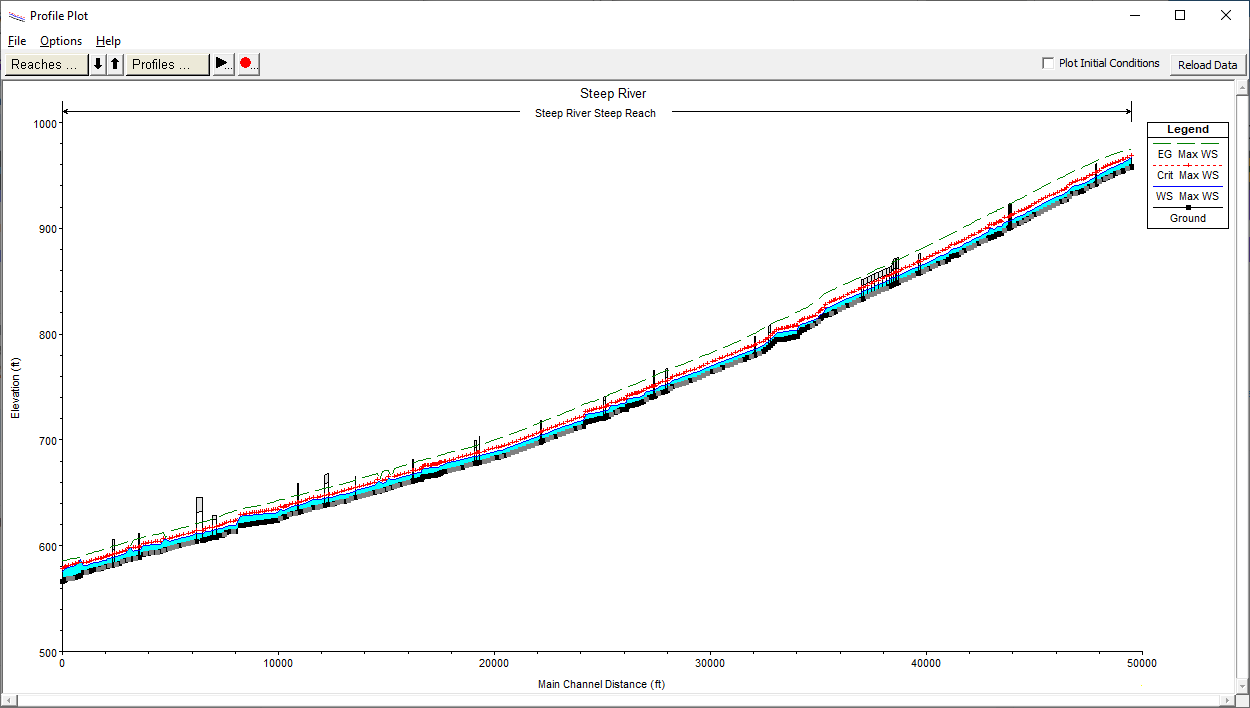
Limitations and Considerations
- Users often ask, whether Modified Puls routing (which is thought of as level-pool routing) can be used in the steep reaches. Yes, you can. The rating curves that are developed for use in unsteady-flow routing in HEC-RAS are built from sloped water surface profiles! Therefore, think of it as linear routing, not level-pool routing.
- To use the Modified Puls routing method, you must develop rating curves using the exact geometry used for the unsteady-flow simulation.
- Modified Puls routing reaches much be broken up at junctions.
- The Modified Puls routing can span across bridges and inline structures.
- However, the Modified Puls should be broken up at any inline structures that have gates. For a large inline structure/dam, you might want to start a Modified Puls region immediately downstream of the structure, but you wouldn't typically need a Modified Puls region immediately upstream of the structure.
- The Modified Puls can compute flow over lateral structures.
- For steep reaches, the Modified Puls can often provide good answers. One limiting factor may be whether the steady flow rating curves represent the unsteady flow. For steep reaches, the downstream tailwater effect does not propagate as far upstream as it would for shallower reaches. So the unsteady flow WSE often matches the steady flow rating curve. Nevertheless, if the Modified Puls is influenced by a tailwater that is not adequately captured by the steady flow rating curves, there will be a loss of hydraulic accuracy. For instance, if the downstream end of a Modified Puls region is influenced by a reservoir that has a varying water surface that is not strongly correlated with the flow. However, even some loss of hydraulic accuracy may be acceptable in order to prevent instability. This is especially true in the situations where the Modified Puls is only being used over a few problematic cross sections.
- The tailwater check option was intended to allow the Modified Puls region to incorporate the effects of when the tailwater was higher than the value from the rating curve. However as far as stability, this option is not as robust as using the Modified Puls without this option. It is recommended to develop the Modified Puls regions without the option. And then, if desired, selectively turn the option on checking that stability is maintained.